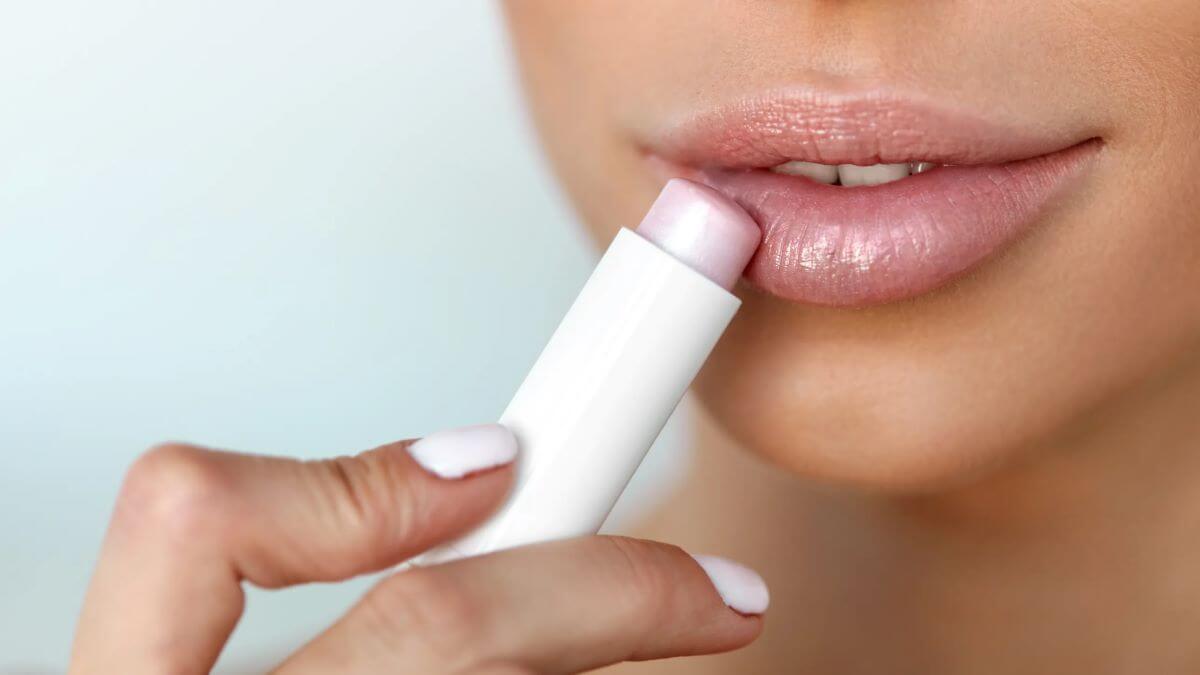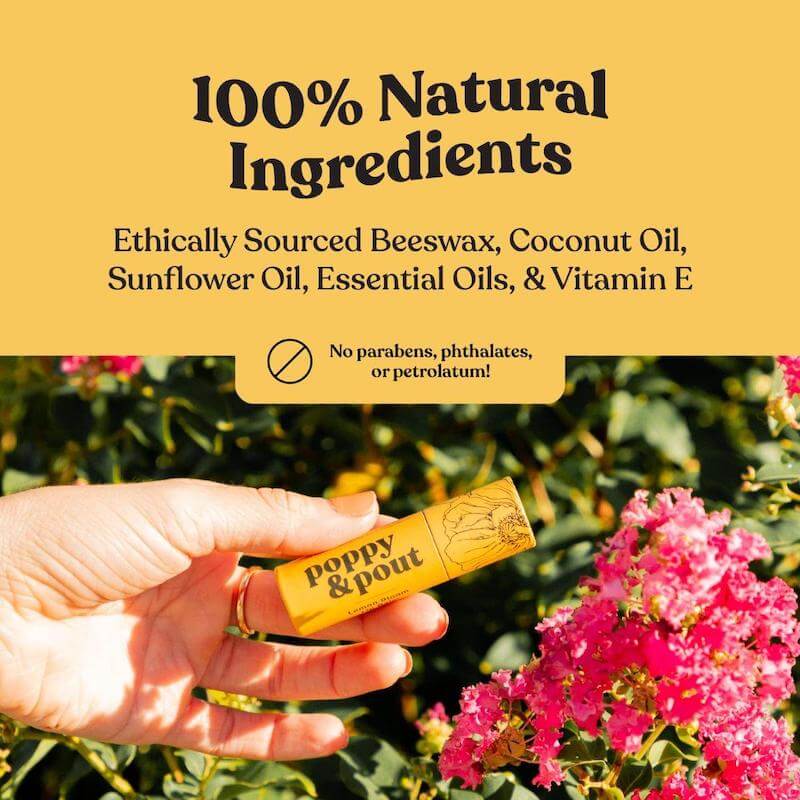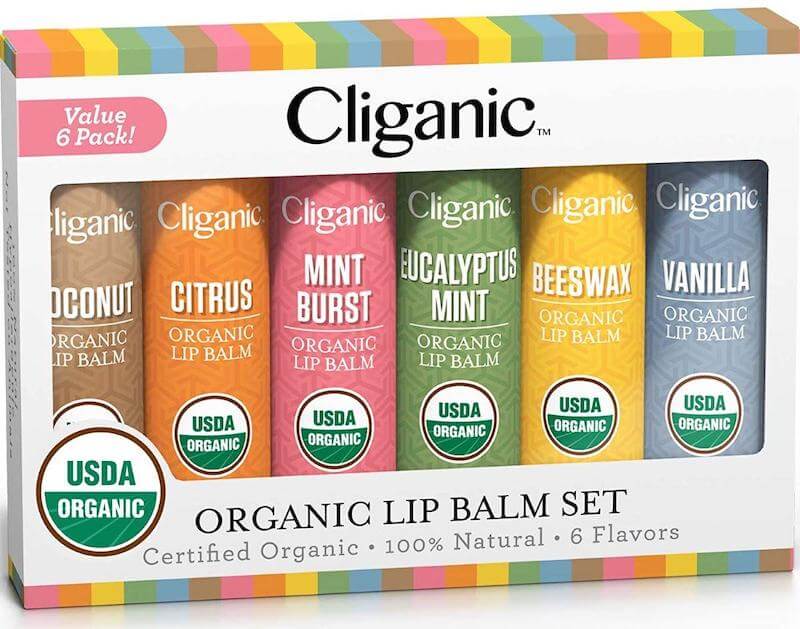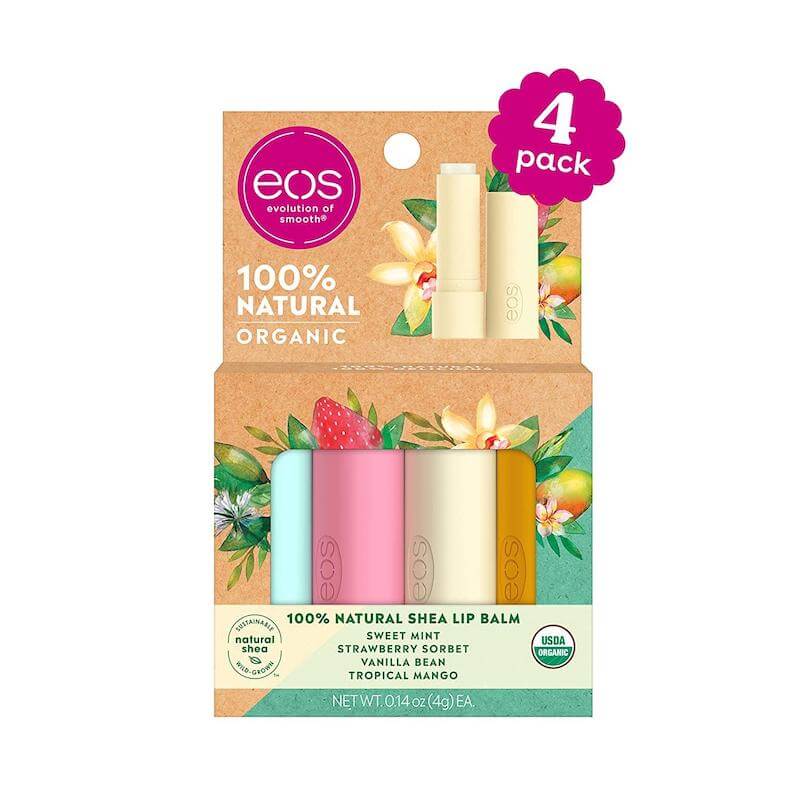Do you want to keep your lips looking and feeling amazing? Of course you do! But at the same time, you don’t want to be putting toxic chemicals on your lips. You’re not alone.
Many commercial brands include ingredients that most people wouldn’t want near their lips if they knew how those chemicals toxify and affect the body in an adverse way.
First, let’s take a look at the ingredients in a popular, mass-produced brand. One of the oldest and most recognized lip balms is classic Chapstick. And keep reading to find out which brands only use healthy ingredients for their flavored lip balm.
Typical ingredients in classic Chapstick and other commercial, non-natural lip balm ingredients
- White Petrolatum
Petrolatum, also known as petroleum jelly, is a semi-solid mixture of hydrocarbons obtained from petroleum. It is used as an ingredient in many medical and cosmetic products.
The biggest health concern with petrolatum is that it can be contaminated with polycyclic aromatic hydrocarbons (PAHs), which are carcinogenic. A study published in the journal Pediatrics in 2006 found that babies who were exposed to petrolatum (through diaper rash cream, for example) were more likely to develop childhood cancers.
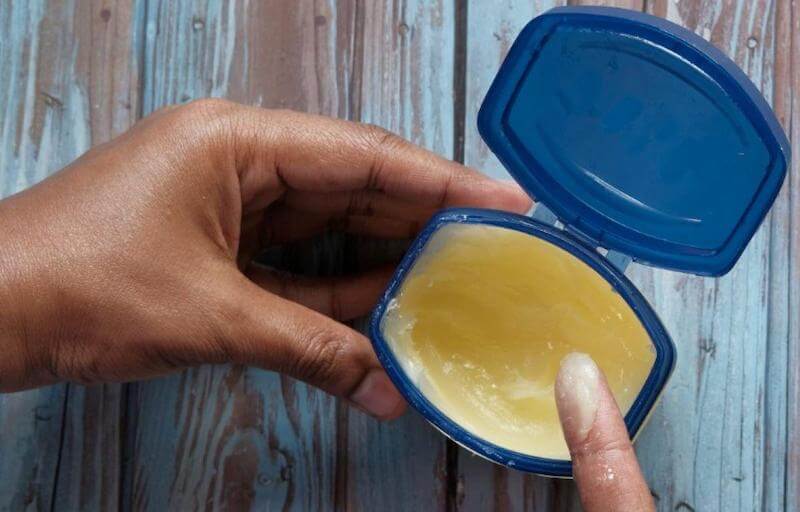
Other potential health concerns include skin irritation and allergic reactions. Inactive Ingredients for Skin Protection
- Arachidyl Propionate
There are a few potential health concerns that could arise from using arachidyl propionate on the lips. It could increase the risk of skin irritation, which can occur in the form of redness, swelling, and itching. Longer-term effects could lead to developing lip cancer.
Camphor is that tingle you feel when you put on lip balm. It may produce a plumping effect, though it can also cause contact dermatitis when used in lip balm.
- Carnauba Wax
Carnauba wax is a wax derived from plants and is generally considered safe, though it is recommended that this wax not be ingested.
- Cetyl Alcohol
Cetyl alcohol is a common ingredient found in many lip balms and other topical application products. It is classified as a non-ionic surfactant, which means it helps to suspend and dissolve oils and fats in water. It is generally safe to use on the skin, but there are a few potential health concerns that should be noted.
One potential concern is that cetyl alcohol can be a skin irritant. It can cause irritation and skin dryness, which can lead to further skin problems down the line. Additionally, cetyl alcohol can also cause contact dermatitis, an inflammatory condition that affects the skin and occurs when the skin comes into contact with an allergen.
- Artificial fragrance
There are a few potential health concerns that may arise when using artificial fragrances on the lips. First and foremost, these products can be harmful if they’re ingested.
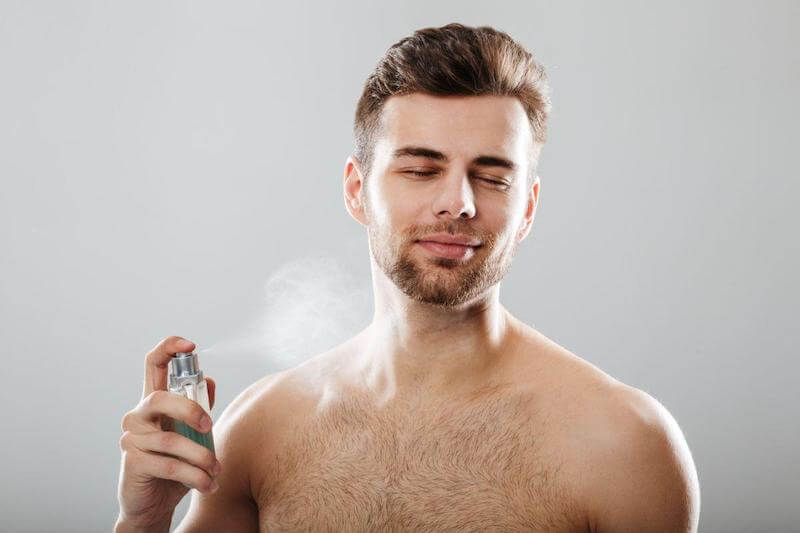
Second, artificial fragrances can cause irritation and sensitization if they’re applied directly to the skin. Finally, these products can also contain chemicals that are known to be hormone disruptors, which cause a myriad of health problems.
- Isopropyl Lanolate
Isopropyl lanolate is a chloroform-based agent, and as such, it can be quite dangerous if it gets into the eyes or nose. It can also be harmful if it gets into contact with the skin; it can cause skin irritation and even cancer. Finally, isopropyl lanolate is known to be toxic to the liver, so people who are particularly susceptible should avoid using it regularly.
- Isopropyl Myristate
Isopropyl myristate is an ester of propylene and myristic acid. It has a petrol-like odor and is used as a lubricant, an anti-wear agent, and a component of some lipstick formulations. Isopropyl myristate is considered a moderate skin irritant and has been linked to repeated skin irritation, contact dermatitis, allergic contact dermatitis, asthma, eczema, and cancer.
- Lanolin
Lanolin is an oil derived from sheep’s wool and is natural and non-toxic.
- light mineral oil
LMO is a mineral oil, which means it is composed of hydrocarbons. These hydrocarbons can be bad for your skin if they are absorbed into it. Second, LMO can cause skin irritation, which could lead to further skin problems. And finally, LMO may increase the risk of dermatitis and other skin cancers.
- Octyldodecanol
There are potential health concerns associated with using octyldodecanol on the lips. First, octyldodecanol is a petroleum-based product and can contain chemicals that are harmful to the skin and mucous membranes.
It can cause irritation and redness when it is applied to the lips, which can lead to further skin problems.
This compound has been found to be a sensitizer, meaning that it can cause allergic reactions in some people. Octyldodecanol may also cause damage to the lip tissue over time.
Octyldodecanol is a highly fragrant compound that can potentially cause irritation and discomfort when applied to the skin.
- Oleyl Alcohol
- The potential for skin irritation: oleyl alcohol is a petroleum-based oil and is known to be potentially irritating to the skin. This could lead to skin rashes, dryness, and even acne.
- The potential for toxicity: oleyl alcohol can be toxic if ingested in large quantities. This includes both oral and inhalation exposure and can cause respiratory problems, liver toxicity, and vision problems.
- The potential for addiction: oleyl alcohol is known to be addictive, which could lead to psychological dependence and withdrawal symptoms if used in high doses over a long period of time.
- Paraffin
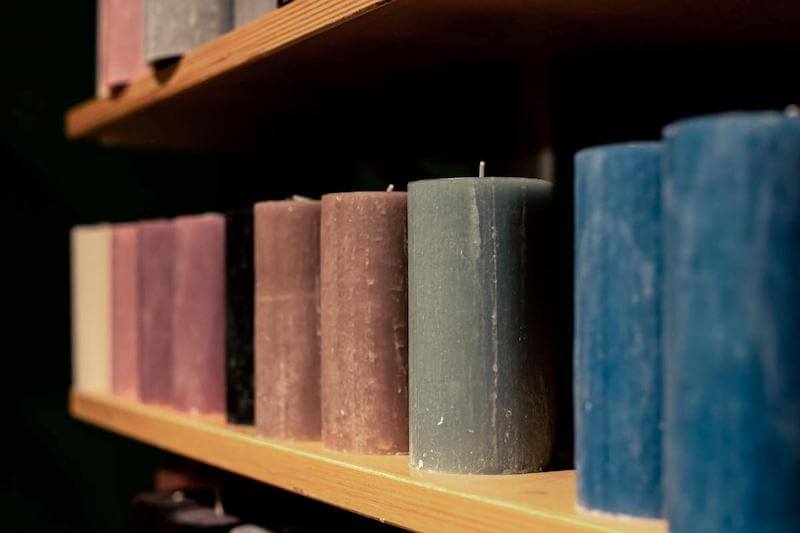
Paraffin is a wax derived from petroleum that is harmful if ingested because it does not break down easily. Paraffin can cause rashes on the skin if it is applied excessively.
Paraffin can be poisonous if it is ingested in large quantities. It can also be poisonous if it gets into the eyes or ears.
- Phenyl Trimethicone
Phenyl Trimethicone is a petroleum derivative that can enter the bloodstream through the skin.Second, it is a hormone disruptor and has been linked to adverse reproductive health and other negative health effects in women and men. Finally, it can cause irritation and skin sensitivity.
- Lake Red 6
Dyes like Red 6 Lake are petroleum-based and build up on the body over time, making them toxic because the body cannot break them down. They are often stored deep within the liver until the liver cannot store any more, and then the toxins are released slowly into the blood stream, causing all sorts of different maladies and diseases.
- Titanium Dioxide
The main concern is that this additive can cause skin irritation, inflammation, dryness, and skin cancer. Additionally, titanium dioxide can also lead to a decrease in the production of melanin, which can lead to a decrease in skin tone and skin protection.
- White Wax
can cause an allergic reaction in some people.
Switching to an all-natural lip balm
After an in-depth look into the potentially hazardous ingredients inside of Chapstick, many people are looking to switch to all-natural lip balms for good. Our goal is to recommend the highest-quality lip balms that add to your health rather than detract from it.
Using an all-natural lip balm will provide all of the delicious benefits of wearing a flavored lip balm without having to worry about any harsh substances that could cause adverse reactions.
Here are our 3 best picks for being an all-natural, delicious, and fragrantly flavored lip balm.
1. Poppy & Pout 100% Natural Lip Balm
Good things to know about Poppy and Pout natural flavored lip balm:
- They are made with beeswax, sunflower oil, organic coconut oil, and just a hint of vanilla. We even throw in some vitamin E for extra nourishment.
- Cruelty-free – Our products are never tested on animals.
- 100% natural ingredients
- Made by hand
- Double the balm of a standard sized lip balm.
- Highly rated on Amazon
2. Cliganic USDA Organic Lip Balm Set – 6 Flavors
Good things to know about Cliganic flavored lip balm set:
- 100% certified organic
- 6 delicious flavors- Mint burst, citrus, beeswax, eucalyptus mint, vanilla and coconut
- Petrochemical free
- 100% natural, keeps lips healthy and soft with nothing unwanted mixed in
- Made in the USA
- Highly rated on Amazon
3. Eos 100% Natural & Organic Lip Balm Sticks
Shea butter is a powerful moisturizer that also contains antioxidants, which help fight off damage from free radicals.
Good things to know about Eos 100% natural flavored lip balm:
- Smooth on lip moisturizer
- Protecting, enjoy your healthiest lips ever
- USDA certified organic
- Shea butter base
- Sweet Mint, Strawberry Sorbet, Vanilla Bean, Tropical Mango, 4 Count per pack
- Not tested on animals
- 100% natural flavors
- Hypoallergenic
- Gluten-free
- Highly rated on Amazon
Frequently asked questions
Does lip balm expire?
Some lip balms do expire, while others may only have a limited lifespan. Lip balm manufacturers typically recommend using their products within 3 to 6 months of purchase. If the lip balm seems to be degrading or has turned color, it should be discarded and replaced.
How long does lip balm last?
Typically, lip balm will last about two to three months if it’s stored in a cool, dry place. If it’s stored in a warm, humid place or if it’s used frequently, the lifespan may be shorter.
Is lip balm the same as chapstick?
Yes, lip balm and chapstick are essentially the same thing – they’re both made of petroleum jelly and petroleum oil if they are not 100% natural, and they’re designed to moisturize and protect your lips. Some people also use them to add a tinge of color or to improve lip shape.
Concluding Thoughts
After reading this article, you might be considering switching to natural flavored lip balms because why not assist your health with every lip swipe with the balm rather than tax it?
You’d like to feel good about getting some on your tongue rather than try to avoid it. These are the small choices that we make that create a world of difference in our health.
More from thewellthieone.com
The links used on thewellthieone.com are affiliate links, which may provide a small commission. This does not increase the price of the goods for the consumer whatsoever. What it does is ensure that useful content like this can continue to be produced. Thank-you for enjoying our content and allowing us to continue to provide more.

